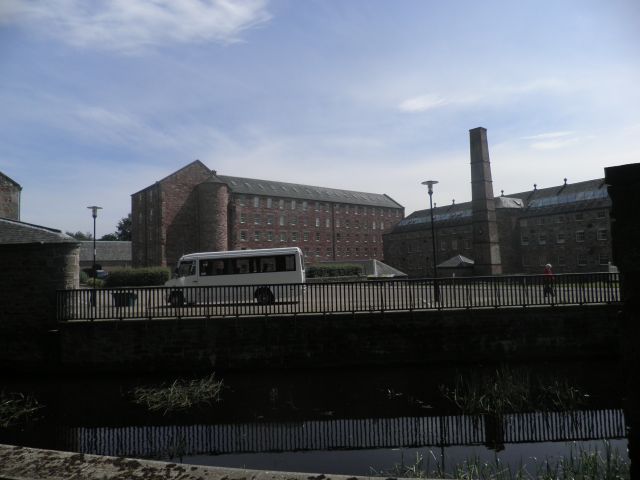
Edinburgh Branch Summer Outing
Stanley Mills, Perthshire
7th June 2014
Begun in 1786 on the initiative of the 4th Duke of Atholl to establish cotton manufacturing, Stanley Mills were founded on a peninsula formed by a hairpin bend in the Tay, the UK's fastest-flowing river, by Perth merchants with technical and financial support from Richard Arkrwright - the Bell Mill is probably the finest surviving example of an Arkwright-designed mill anywhere in the world. People cleared to make way for sheep on the Atholl and Breadalbane estates were settled in the purpose-built village of Stanley and sent to Arkwright's pioneering water-powered mill at Cromford for training. Textiles were manufactured almost continuously for 200 years. As demands changed and technologies developed, buildings were added, adapted, expanded, destroyed by fire, rebuilt, shut down, reopened and demolished. Machinery came and went, powered initially by water wheels and latterly by electricity generated by water-powered turbines on site. During both World Wars, webbing was made for the armed forces and from 1916 a light loom manufactured an endless tape for cigarette-making. Yarn for the Dundee jute trade and Fife weaving firms, brake lining for cars, hosepipes, bookbinder and chair webbing saw the Mills through the 1930s, but Indian independence lost a major export market and with the market for cotton belting also in decline the final new venture was into acrylic fibres - but a management buyout in 1979 was not enough to avert closure ten years later. In 1995 after a fire had gutted the North Range the site was bought by Historic Scotland, and thanks to grants from the Heritage Lottery Fund and a collaboration with the Phoenix Trust creating 39 private residences in the East Mill and part of the Mid Mill it has been possible to restore Stanley Mills to their present condition. A hydro-electric power station built in 1921 closed in 1965 but reopened in 2003 to generate electricity for the National Grid.